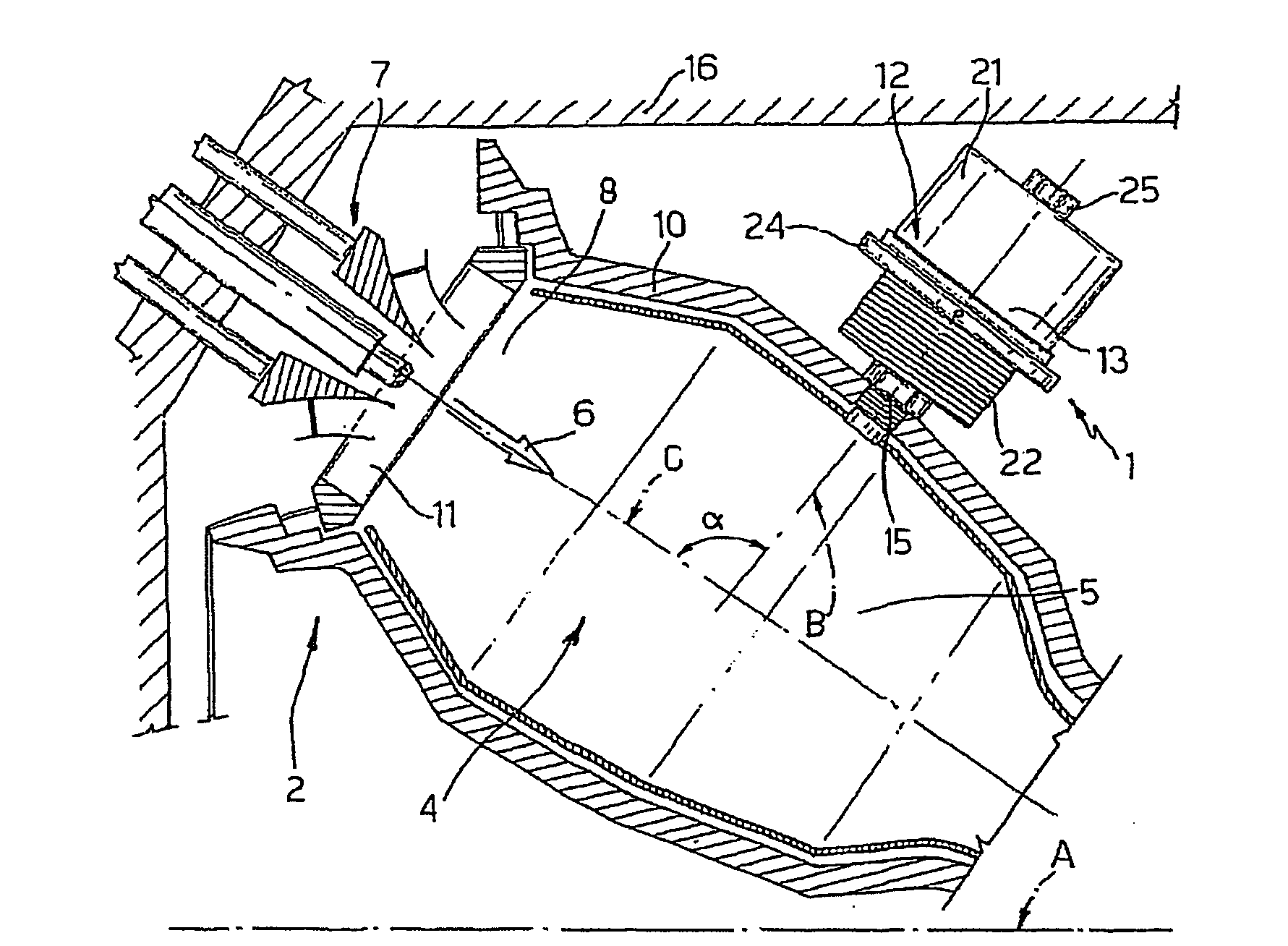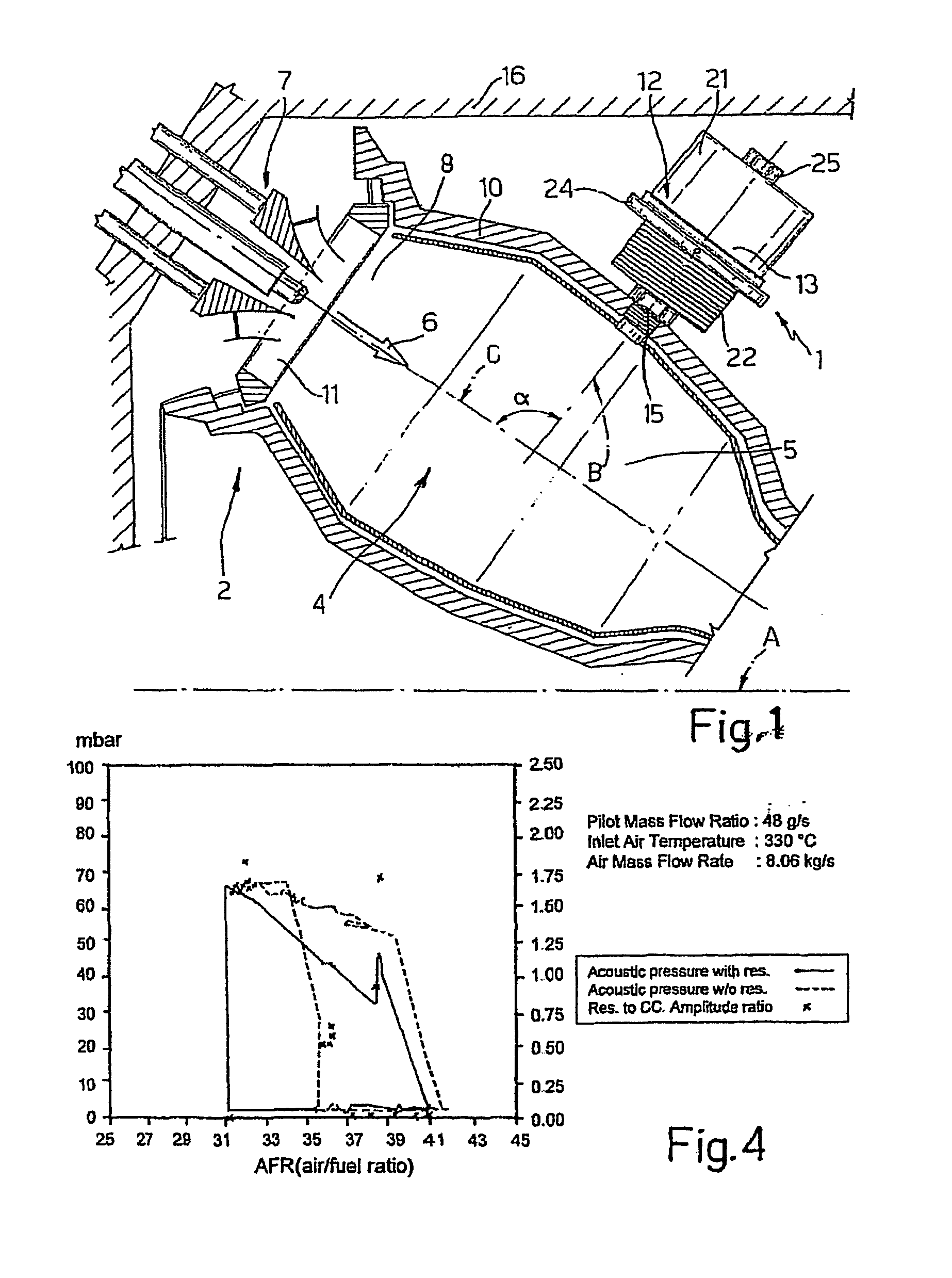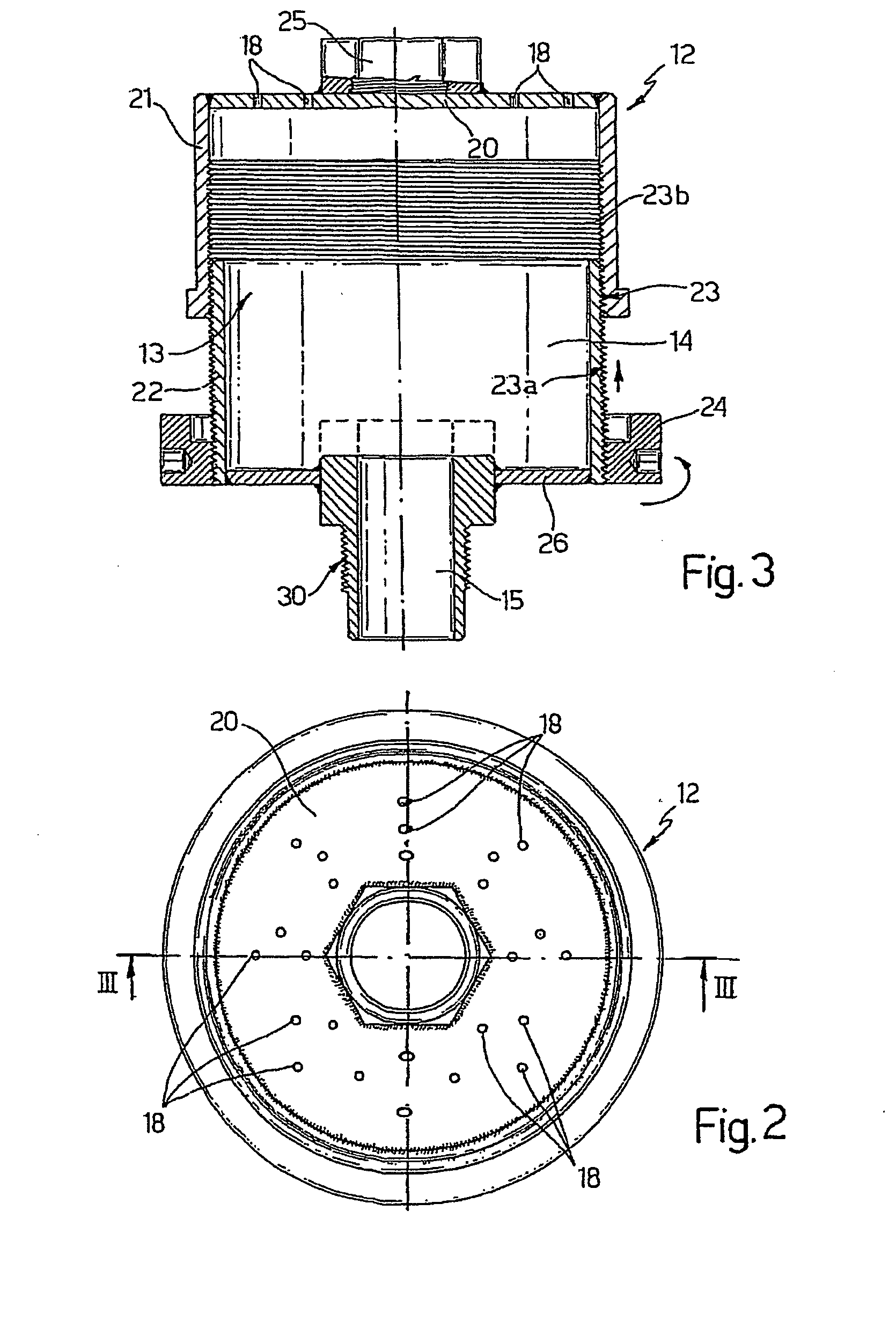System for Damping Thermo-Acoustic Instability in a Combustor Device for a Gas Turbine
a technology of thermo-acoustic instability and combustor device, which is applied in the direction of machines/engines, mechanical equipment, light and heating equipment, etc., can solve the problems of thermo-acoustic instability, undesirable vibration in the turbine, damage to the components of the turbine, etc., and achieve the effect of proven effectiveness
- Summary
- Abstract
- Description
- Claims
- Application Information
AI Technical Summary
Benefits of technology
Problems solved by technology
Method used
Image
Examples
example of application
[0050]The damping system presented in the foregoing description, with reference to the annexed plate of drawings was tested in an experimental annular combustor manufactured by the present applicant, where a number of resonators were installed in conformance with the drawing of FIG. 3, said resonators being distributed along the circumference of the combustion chamber in the positions indicated in FIG. 1. More in particular, the annular combustor was connected to an existing (40-MWth) boiler and was made up of the following components;[0051]a combustion chamber of a commercially available AEN / SIE GT;[0052]twenty-four AEN / SIE hybrid burners;[0053]a natural-gas (NG) supply system for operating in diffusion, premixing, and pilot modes;[0054]an air supply from the fan of the boiler provided with a pre-heater for pre-heating up to 350° C.; and[0055]a chimney (the same as that of the boiler).
[0056]The instrumentation used comprised:[0057]a meter for measuring the flow, pressure, and tempe...
PUM
 Login to View More
Login to View More Abstract
Description
Claims
Application Information
 Login to View More
Login to View More - R&D
- Intellectual Property
- Life Sciences
- Materials
- Tech Scout
- Unparalleled Data Quality
- Higher Quality Content
- 60% Fewer Hallucinations
Browse by: Latest US Patents, China's latest patents, Technical Efficacy Thesaurus, Application Domain, Technology Topic, Popular Technical Reports.
© 2025 PatSnap. All rights reserved.Legal|Privacy policy|Modern Slavery Act Transparency Statement|Sitemap|About US| Contact US: help@patsnap.com



